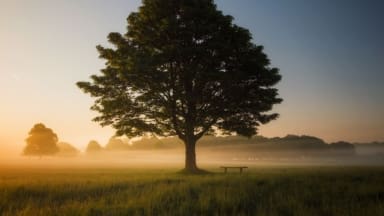
Trees for life
Make the transition from ‘planting’ a tree to ‘growing’ a tree.
Both Tony Kirkham MBE VMH (Former Head of Arboretum, Gardens & Horticulture Services at Kew Royal Botanic Gardens) and Sara Lom appealed for tree planting to be more than the habitual process of selection and planting operation by encompassing a longer term vision of “establishing” the right tree in the right location.
“Whatever the reason for species selection we must be successful with the planting, ensuring that we get the operation right followed by good aftercare. Looking after it, watering it, until it’s established and independent without it relating on any further need for help from us”, explained Kirkham. Too often, saplings and trees fail as they have been prematurely left to their own devices, in the hope for suitably wet weather to avoid having to water them. Planting budgets must include aftercare (people, resources, water and materials) to ensure tree survival and establishment.
Planting season
Tree care involves watering, mulching, guards and weeding around the base until established, but so too planting at the right time. Changing weather patterns has impacted the traditional tree planting season which runs between November and March.
“I do all my tree planting in autumn now, not spring” confirmed Kirkham. For the past years, spring has been both dry and hot causing stress for newly planted trees, impacting their survival. Both, Kirkham and Lom agreed that tree planting is now best done in the autumn to pre-Christmas, to ensure the young tree has had some time to establish before facing another possible dry spring.
That means that the tree planting season as we know it, has been shortened substantially and brought forward, which is something nurseries and the industry will need to accommodate.
Tree shortages
With the added pressure (from the Government) to planting more trees to combat climate change and improve biodiversity, supplies are fast depleting. UK tree supplies are currently acutely low. Kirkham confirmed, that it will take time for UK nurseries to meet the demand and grow the required stock.
Trees for purpose
RHS post-doctoral Research Fellow, Elisabeth K. Larsen discussed tree species that are best suited to maximise the delivery of selected ecosystem services, especially using smaller trees for domestic gardens. The range of potential ‘services’ including, thermal regulation, flood risk reduction, green screens, carbon storage and supporting pollinators and biodiversity. Hence expanding the traditional advice of ‘right plant, right place’ to include ‘right purpose’.
Hedgerows
Lom reiterated how hedgerows form the UK’s largest wildlife habitat and are crucial to halting biodiversity decline and tackling climate change. Healthy hedgerows are essential habitats for UK biodiversity, supporting 80% of woodland birds and over 2,000 species including the hedgehog, dormouse, most species of bat and the great-crested newt.
The Climate Change Committee has advised that the UK needs to increase our hedgerows by 40% to meet our 2050 net zero target, which means planting 200,000km of new hedgerows – the equivalent of half the length the UK road network.
Lack of arborists
With the focus on growing and caring for trees, Lom pointed out the desperate shortage of trained arborists and foresters in the UK. Lack of expertise can lead to poorly managed woodlands and urban trees. Worse still, trees may be being planted improperly or on the wrong sites and hence, be more susceptible to pests and diseases.

